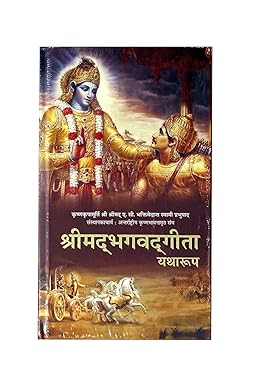परिचय:
कन्याकुमारी शक्तिपीठ भारत के तमिल नाडु के दक्षिणी सिरे पर स्थित एक पवित्र मंदिर है, जो माता कन्याकुमारी को समर्पित है। माना जाता है कि माता सती का शरीर यहीं गिरा था। यह मंदिर भक्तों के लिए आध्यात्मिक शक्ति, सुरक्षा, आशीर्वाद और इच्छाओं की पूर्ति प्राप्त करने का प्रमुख स्थल है। माता कन्याकुमारी साहस, पवित्रता, दैवीय ऊर्जा और अच्छाई की जीत का प्रतीक हैं।
इतिहास और पौराणिक कथा:
हिंदू पुराणों के अनुसार, सती माता के आत्मदाह के बाद भगवान शिव ने उनका शव उठाया और तांडव किया। ब्रह्मांडीय संतुलन स्थापित करने के लिए भगवान विष्णु ने सुदर्शन चक्र से उनका शरीर काटा। सती का शरीर कन्याकुमारी में गिरे, जिससे कन्याकुमारी शक्तिपीठ स्थापित हुआ। यहाँ पूजा करने से आध्यात्मिक शक्ति, साहस, सुरक्षा और इच्छाओं की पूर्ति मिलती है।
मंदिर वास्तुकला:
कन्याकुमारी मंदिर में परंपरागत द्रविड़ शैली का मंदिर स्थापत्य है, जिसमें नक्काशीदार स्तंभ, गोपुरम (प्रवेश द्वार) और गर्भगृह में माता कन्याकुमारी की मूर्ति है। मंदिर परिसर में छोटे मंदिर, पवित्र तालाब और ध्यान करने के स्थान हैं। समुद्र के शांत वातावरण से मंदिर का आध्यात्मिक अनुभव और गहरा हो जाता है।
महत्व:
-
कन्याकुमारी शक्तिपीठ दक्षिण भारत में शक्ति पूजा का प्रमुख केंद्र है।
-
भक्त यहाँ आध्यात्मिक शक्ति, साहस, आशीर्वाद और बुरी शक्तियों से सुरक्षा प्राप्त करने के लिए आते हैं।
-
प्रमुख त्योहारों में नवरात्रि, चित्र पौर्णिमा और कन्या पूजा शामिल हैं।
पूजा और अनुष्ठान:
-
अर्पण में शामिल हैं: फूल, फल, नारियल, हल्दी, धूप और लाल वस्त्र।
-
पुजारी प्रतिदिन आरती, अभिषेक और विशेष पूजा करते हैं।
-
भक्त कन्याकुमारी मंत्रों का जाप और ध्यान करते हैं।
यात्रा सुझाव:
-
यात्रा का सर्वोत्तम समय: अक्टूबर से मार्च, विशेष रूप से नवरात्रि और कन्या पूजा के दौरान।
-
नजदीकी रेलवे स्टेशन: नागरकोइल रेलवे स्टेशन, तमिल नाडु।
-
आसपास के दर्शनीय स्थल: विवेकानंद रॉक मेमोरियल, थिरुवल्लुवर स्टैच्यू और अरब सागर तट।
Overview of Kanyakumari Shaktipeeth
Location and Significance
Kanyakumari Shaktipeeth is situated at the southern tip of India, where the back (spine) of Goddess Sati is believed to have fallen. This sacred site is also known as Kanyakumari Bhagavathy Amman Temple.
Historical Background
The temple's origins trace back over 3000 years, with the current structure built by the Pandya emperors in the 8th century. It features Dravidian architecture with intricate carvings and multiple domes.
Deity Worshipped
The principal deity worshipped at this temple is Goddess Kanyakumari, also known as Kumari Amman. She is depicted as a virgin goddess adorned with jewels and flowers.
Mythological Significance
According to Hindu mythology, after Goddess Sati's self-immolation, her body parts were scattered across the subcontinent. The back (spine) fell at this location, making it a revered site for devotees.
Importance in Shakti Peetha Tradition
As one of the 51 Shakti Peethas, Kanyakumari Shaktipeeth holds immense spiritual significance. It is considered a center of tantric worship and is associated with the worship of Goddess Kanyakumari.
Temple Architecture and Design
Temple Structure
The temple exhibits a unique architectural style characterized by intricately carved pillars, a towering spire, and a sanctum sanctorum housing the deity. The design reflects the traditional Dravidian architectural style prevalent in South India.
Inner Sanctum
The inner sanctum houses the idol of Goddess Kanyakumari, adorned with jewels and flowers. Devotees offer prayers and seek blessings for prosperity, health, and well-being.
Additional Chambers
The temple complex includes several chambers, such as the hall for devotees, a water tank, and spaces for rituals and ceremonies. These structures feature inscriptions and sculptures from various periods, reflecting the temple's historical evolution.
Water Features
The temple complex includes a sacred water tank where devotees take ritual baths before entering the temple. The water is considered holy and is believed to purify the mind and body.
Renovations and Preservation
Over the centuries, the temple has undergone several renovations to preserve its structural integrity and spiritual sanctity. These efforts ensure that the temple remains a vibrant center of worship and pilgrimage.
Temple Rituals and Worship
Daily Pujas
Daily rituals include offerings of flowers, fruits, and incense. Devotees engage in prayers and chants, seeking blessings from Goddess Kanyakumari for prosperity, health, and well-being.
Special Prayers
Special prayers are conducted during auspicious occasions, where devotees perform elaborate rituals to honor Goddess Kanyakumari, seeking her divine intervention in various aspects of life.
Offerings
Common offerings include gold and silver coins, sweets, and traditional items. Devotees believe that presenting these offerings with devotion brings them closer to the goddess and fulfills their wishes.
Role of Priests
The temple is managed by a group of priests who perform rituals with precision and ensure the sanctity of the temple is maintained. They guide devotees in performing the correct procedures during worship.
Spiritual Significance
Engaging in temple rituals is believed to bring spiritual upliftment, mental peace, and divine protection to the devotees. The rituals are designed to connect the worshippers with the divine energy of Goddess Kanyakumari.
Festivals and Celebrations
Navaratri Celebrations
Navaratri is celebrated with great fervor at Kanyakumari Shaktipeeth. Devotees participate in nine nights of worship, culminating in Vijayadashami, seeking blessings for prosperity and well-being.
Devotee Participation
Devotees actively participate in the festivals, offering prayers, performing rituals, and engaging in community feasts. The participation fosters a sense of community and spiritual unity.
Temple Decorations
During festivals, the temple is beautifully decorated with lights, flowers, and traditional motifs, creating a vibrant atmosphere that enhances the spiritual experience.
Traditional Performances
Traditional art forms like dance and music are performed during festivals, adding cultural richness to the celebrations and attracting visitors from various regions.
Community Involvement
The festivals foster a sense of community, bringing together people from various backgrounds to celebrate and uphold traditions, strengthening the cultural fabric of the region.
Travel and Accessibility
Location Details
Kanyakumari Shaktipeeth is located at the southern tip of India, where the Arabian Sea, the Bay of Bengal, and the Indian Ocean meet. The temple offers a peaceful and spiritual environment, attracting pilgrims and tourists alike.
Nearest Railway Station
The nearest railway station is located in the vicinity, providing easy access for travelers.
Nearest Airport
The nearest airport is located in the region, offering connectivity to major cities.
Local Transportation
Local transportation options include taxis, auto-rickshaws, and buses, making it convenient for visitors to reach the temple.
Accommodation Options
There are several accommodation options ranging from budget hotels to guesthouses in the area, catering to the needs of pilgrims and tourists.
Kanyakumari Shaktipeeth is situated at the southern tip of India, where the back (spine) of Goddess Sati is believed to have fallen. This sacred site is also known as Kanyakumari Bhagavathy Amman Temple.
The temple's origins trace back over 3000 years, with the current structure built by the Pandya emperors in the 8th century. It features Dravidian architecture with intricate carvings and multiple domes.
The principal deity worshipped at this temple is Goddess Kanyakumari, also known as Kumari Amman. She is depicted as a virgin goddess adorned with jewels and flowers.
According to Hindu mythology, after Goddess Sati's self-immolation, her body parts were scattered across the subcontinent. The back (spine) fell at this location, making it a revered site for devotees.
As one of the 51 Shakti Peethas, Kanyakumari Shaktipeeth holds immense spiritual significance. It is considered a center of tantric worship and is associated with the worship of Goddess Kanyakumari.
The temple exhibits a unique architectural style characterized by intricately carved pillars, a towering spire, and a sanctum sanctorum housing the deity. The design reflects the traditional Dravidian architectural style prevalent in South India.
The inner sanctum houses the idol of Goddess Kanyakumari, adorned with jewels and flowers. Devotees offer prayers and seek blessings for prosperity, health, and well-being.
The temple complex includes several chambers, such as the hall for devotees, a water tank, and spaces for rituals and ceremonies. These structures feature inscriptions and sculptures from various periods, reflecting the temple's historical evolution.
The temple complex includes a sacred water tank where devotees take ritual baths before entering the temple. The water is considered holy and is believed to purify the mind and body.
Over the centuries, the temple has undergone several renovations to preserve its structural integrity and spiritual sanctity. These efforts ensure that the temple remains a vibrant center of worship and pilgrimage.
Daily rituals include offerings of flowers, fruits, and incense. Devotees engage in prayers and chants, seeking blessings from Goddess Kanyakumari for prosperity, health, and well-being.
Special prayers are conducted during auspicious occasions, where devotees perform elaborate rituals to honor Goddess Kanyakumari, seeking her divine intervention in various aspects of life.
Common offerings include gold and silver coins, sweets, and traditional items. Devotees believe that presenting these offerings with devotion brings them closer to the goddess and fulfills their wishes.
The temple is managed by a group of priests who perform rituals with precision and ensure the sanctity of the temple is maintained. They guide devotees in performing the correct procedures during worship.
Engaging in temple rituals is believed to bring spiritual upliftment, mental peace, and divine protection to the devotees. The rituals are designed to connect the worshippers with the divine energy of Goddess Kanyakumari.
Navaratri is celebrated with great fervor at Kanyakumari Shaktipeeth. Devotees participate in nine nights of worship, culminating in Vijayadashami, seeking blessings for prosperity and well-being.
Devotees actively participate in the festivals, offering prayers, performing rituals, and engaging in community feasts. The participation fosters a sense of community and spiritual unity.
During festivals, the temple is beautifully decorated with lights, flowers, and traditional motifs, creating a vibrant atmosphere that enhances the spiritual experience.
Traditional art forms like dance and music are performed during festivals, adding cultural richness to the celebrations and attracting visitors from various regions.
The festivals foster a sense of community, bringing together people from various backgrounds to celebrate and uphold traditions, strengthening the cultural fabric of the region.
Kanyakumari Shaktipeeth is located at the southern tip of India, where the Arabian Sea, the Bay of Bengal, and the Indian Ocean meet. The temple offers a peaceful and spiritual environment, attracting pilgrims and tourists alike.
The nearest railway station is located in the vicinity, providing easy access for travelers.
The nearest airport is located in the region, offering connectivity to major cities.
Local transportation options include taxis, auto-rickshaws, and buses, making it convenient for visitors to reach the temple.
There are several accommodation options ranging from budget hotels to guesthouses in the area, catering to the needs of pilgrims and tourists.


